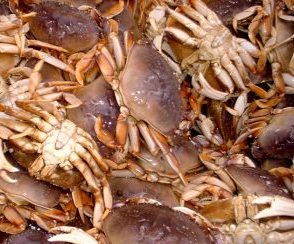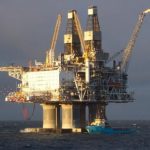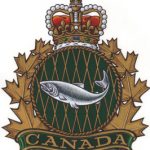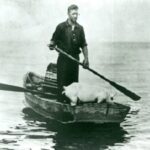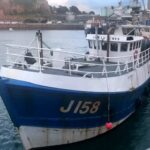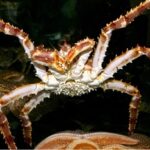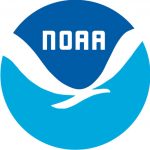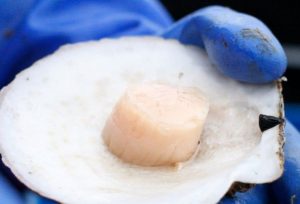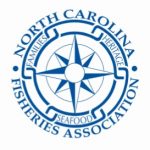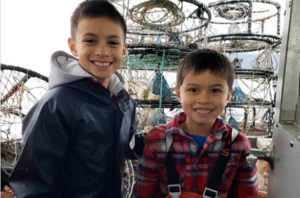Tag Archives: Oregon State University.
Wave Energy: Big waves off Oregon coast fuel cutting-edge effort to harness the ocean for electricity
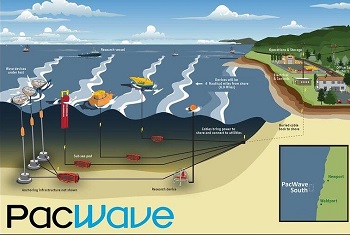 The effort is different from the contentious offshore wind leases planned along the southern Oregon coast. The wave test site is experimental, has a smaller footprint and could directly benefit coastal economies. It also was developed with community input, winning local support. “Wave energy is incredibly attractive as a future renewable power source,” said Bryson Robertson, director of the Pacific Marine Energy Center at Oregon State University. (more project links) “Not only is it capable of generating power close to where we need it, but it can generate it at the time we need it and we can predict it. Which is very useful and powerful for meeting consumer demand.” “It’s different from wind and solar because wave energy just keeps going and going,” Hales said. “It’s more reliable. It could become an essential part of a diversified energy portfolio.” more, >>CLICK TO READ<< 09:39
The effort is different from the contentious offshore wind leases planned along the southern Oregon coast. The wave test site is experimental, has a smaller footprint and could directly benefit coastal economies. It also was developed with community input, winning local support. “Wave energy is incredibly attractive as a future renewable power source,” said Bryson Robertson, director of the Pacific Marine Energy Center at Oregon State University. (more project links) “Not only is it capable of generating power close to where we need it, but it can generate it at the time we need it and we can predict it. Which is very useful and powerful for meeting consumer demand.” “It’s different from wind and solar because wave energy just keeps going and going,” Hales said. “It’s more reliable. It could become an essential part of a diversified energy portfolio.” more, >>CLICK TO READ<< 09:39
Crisis Hotline: New option for farmers, ranchers, loggers and fishermen in Oregon
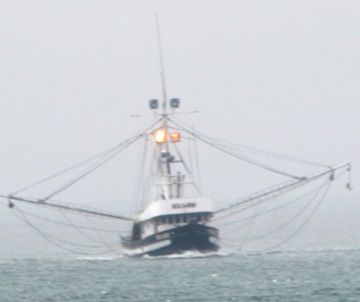 A new hotline, the Agristress Helpline, launched in Oregon in September. It is tailored to support those who work in agriculture, forestry or the fishing industry through a phone and text service that operates 24 hours a day, seven days a week. The helpline is free and has trained counselors with experience in those industries who can take phone calls in 160 languages, with English, Spanish and Vietnamese professionals available to respond by text. Experts say the line is sorely needed. Although the 988 crisis line provides a similar service, the Agristress line is specialized to address the needs of farmers, ranchers, loggers and fishermen. They often work in social and geographic isolation and in areas with limited access to health care services. These professions also have to grapple with extreme weather conditions, such as flash flooding or drought, and they face fluctuating commodity prices. >>click to read<< 18:06
A new hotline, the Agristress Helpline, launched in Oregon in September. It is tailored to support those who work in agriculture, forestry or the fishing industry through a phone and text service that operates 24 hours a day, seven days a week. The helpline is free and has trained counselors with experience in those industries who can take phone calls in 160 languages, with English, Spanish and Vietnamese professionals available to respond by text. Experts say the line is sorely needed. Although the 988 crisis line provides a similar service, the Agristress line is specialized to address the needs of farmers, ranchers, loggers and fishermen. They often work in social and geographic isolation and in areas with limited access to health care services. These professions also have to grapple with extreme weather conditions, such as flash flooding or drought, and they face fluctuating commodity prices. >>click to read<< 18:06
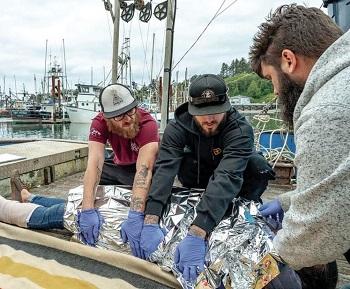
Fishermen first aid and safety training coming to Charleston
Commercial fishing is a dangerous and challenging occupation. Everyone wants to be safe, but the risk of injury is always there. With this in mind, a team from Oregon State University and Oregon Sea Grant developed Fishermen First Aid and Safety Training, designed around the principles of wilderness first aid to better enable fishermen to prevent and treat injuries they are likely to encounter at sea. This year OSU is partnering with the Charleston Fishing Families to host FFAST August 29 and 30 from 8:30 a.m. to 5 p.m. at their office near the Charleston Marina. >click to read, with additional links< 14:33
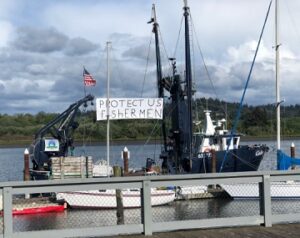
Oregon Senators, Governor responds to offshore wind farms concerns during clean energy tour
During a clean energy tour of Oregon, KATU questioned the US Secretary of Energy, Jennifer Granholm, Oregon Senators Ron Wyden, Jeff Merkley and Governor Kate Brown on issues surrounding wind farms slated for the Southern Oregon Coast. “It’s too early honestly we don’t know it’s a lot like the wave energy technology it’s still being built it’s still being created,” said Oregon Gov. Kate Brown when asked if she would advocate funding for preliminary wind farm testing ahead of federal leases planed for Southern Oregon offshore areas. “We really need to understand all of the impacts upfront before we rush into this,” said Heather Mann Executive Director of the Midwater Trawlers’ cooperative. >click to read< 09:56
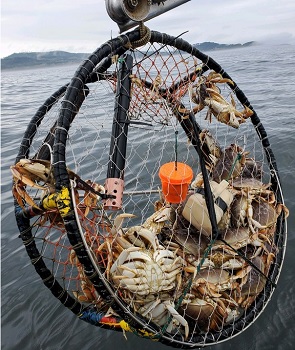
Pacific Coast crabs are suffocating
The crab pots are piled high at the fishing docks in Newport, Oregon. Stacks of tire-sized cages fill the parking lot, festooned with colorful buoys and grimy ropes. By this time in July, most commercial fishers have called it a year for Dungeness crab. But not fisherman Dave Bailey,,, Recent years have also brought outbreaks of domoic acid, which renders crab unsafe to eat, and increasing incidents of humpback whales getting tangled in crab gear. However, there’s another emerging problem that threatens not only Bailey’s livelihood but the very ecosystem that sustains it. I’ve come today to see 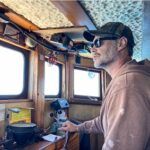 a tool that could help crabbers manage. On the counter in the kitchenette, amid bowls of instant noodles and tinned oysters, Bailey shows me a sturdy black tube, about 60 centimeters long, that fits neatly inside a crab pot. Photos, video, >click to read< 13:25
a tool that could help crabbers manage. On the counter in the kitchenette, amid bowls of instant noodles and tinned oysters, Bailey shows me a sturdy black tube, about 60 centimeters long, that fits neatly inside a crab pot. Photos, video, >click to read< 13:25
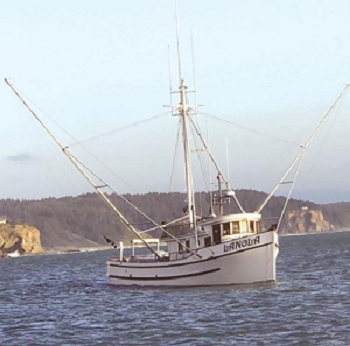
Fisherman saved by OSU research vessel when his fishing vessel went down in heavy seas
Frank Akers, 70-year-old owner and operator of the 50-foot F/V Lanola, said he was about 38 miles west of Newport heading eastbound in heavy seas at about 10 p.m. on Aug. 28, when the first of a series of waves collided with his vessel, giving him only minutes to escape. Akers said he believes the first wave that struck the vessel had a log in it because he heard a crash. After the second wave hit, he looked back and saw his stern go under. His bilge alarms went off and he radioed a mayday call. >click to read< 21:06
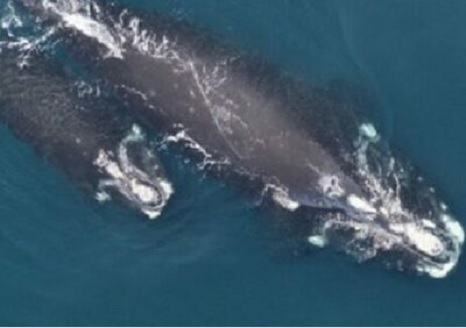
Whales Are Shrinking. Scientists Blame Commercial Fishing Gear
The findings, published today in the journal Current Biology, reveal that when fully grown, a North Atlantic right whale born today would be expected to be about one meter shorter than a whale born in 1980. The stunted growth of the whales coincides with an increasing rate of entanglements. A 2012 study from the New England Aquarium revealed,,, Researchers acknowledge that entanglements do not explain all of the reduced growth. Other factors might be climate change, collisions and noise from ships, and the shifting availability of tiny crustaceans called copepods, their primary food source. >click to read< 13:30

Federal lease allows Oregon State’s offshore wave energy testing facility to move ahead in 2021
The lease for PacWave South is the first marine renewable energy research lease the Bureau of Ocean Energy Management has issued in federal waters off the West Coast. The estimated $80 million facility will be located offshore southwest of Newport, Oregon. The project still must receive licensing approval from the Federal Energy Regulatory Commission before it can move forward. Obtaining the lease is an essential component of the licensing requirements. >click to read< 12:22
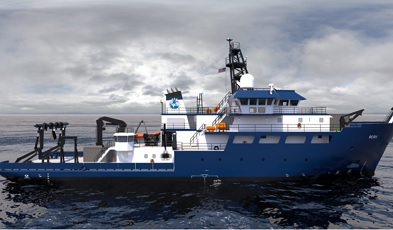
The Gulf’s new research ship needs a name. What’s your idea?
The Gulf of Mexico’s largest research ship won’t be built until 2023, but the naming process has already begun.,, Last month, the National Science Foundation announced it would pay $106 million to build the ship.,, Gulf Island Fabrication in Houma will build the ship, along with two others also funded by the foundation. The nearly identical ships will go to Oregon State University and the University of Rhode Island. >click to read< 13:02
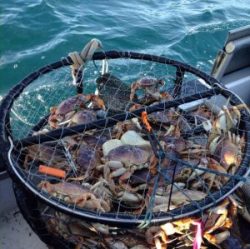
Coast Guard will help researchers track whales along the West Coast
The Oregon crab industry is putting up money to launch a new research study on where whales swim and feed along the Pacific Coast. The study stems from growing concern West Coast-wide about whales getting tangled in fishing gear. The Oregon Dungeness Crab Commission voted unanimously Tuesday to underwrite the first year of a three-year aerial survey of humpbacks, gray whales and blue whales off the coast. Oregon State University researcher Leigh Torres said the Marine Mammal Institute, which she leads, and the state Department of Fish and Wildlife hope to win a federal grant to cover years two and three. >click to read<22:57
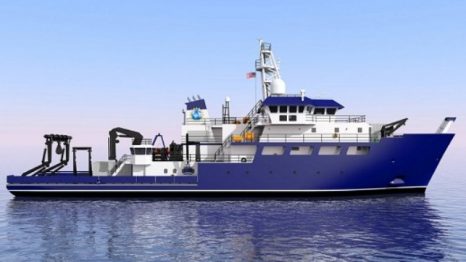
Oregon State University Orders Second U.S. Research Ship
Oregon State University has received $88 million from the National Science Foundation to lead construction of a second Regional Class research vessel to help bolster the nation’s aging academic research fleet. The National Science Foundation selected Oregon State in 2013 to lead the initial design phase for as many as three new vessels, and the National Science Board authorized as much as $365 million for the project. Last summer, the National Science Foundation awarded Oregon State University a grant of $121.88 million to launch the construction of the first vessel, which Gulf Island Shipyards in Louisiana is building and the university will operate. >click to read<10:40
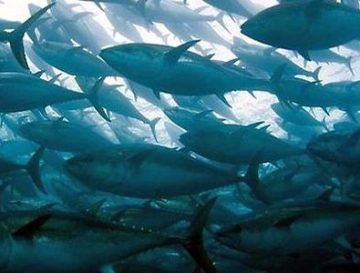
Study finds tuna fishermen who fish along ocean fronts can significantly boost revenue
These oceanographic conditions are more complex than simply being warmer temperatures, said James Watson, an OSU marine ecologist and lead author on the study. Their technical name is Lagrangian Coherent Structures, though scientists often refer to them as “the skeletons of the sea.”“Essentially they are physical ocean fronts where surface waters converge,” Watson said.,, “What we’ve found is that the stronger the convergence, the more likely it is to attract certain things, beginning with the aggregation of phytoplankton, which in turn attracts larger organisms like tuna – and, ultimately, tuna fishermen.” >click to read<12:25
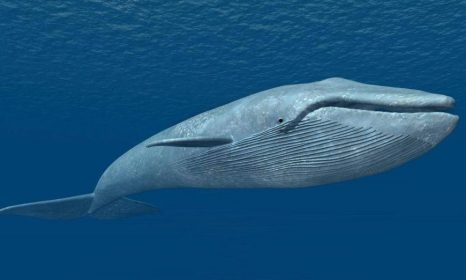
Scientist exposes impacts of seismic airguns on NZ Blue Whales
A renowned marine ecologist at Oregon State University has laid bare the harmful impacts that seismic blasting for oil has on New Zealand’s marine life, including the blue whale. Dr Leigh Torres from the Marine Mammal Institute at Oregon State University, has penned a blog and released recordings that expose the intensity of the seismic airguns used by the petroleum industry to search for oil. The report was written in collaboration with Dr Holger Klinck from Cornell University. click here to read the story 10:53
The Ocean’s Low-Oxygen Dead Zones Are Getting Worse
 Along the West Coast, low-oxygen levels in bottom layers of the ocean, known as hypoxia, have become a big concern for scientists and fishers alike—fish and crabs are vital to ecosystems, research, and an entire industry. “We’re always on the lookout to see, is this going to be a bad year?” says Francis Chan, a marine ecologist at Oregon State University who studies the effects of ocean chemistry. And by all accounts, 2017 shaped up to be a bad year. Scientists first got reports of crabs dying in pots off the Oregon coast back in 2002. Since then, says Chan, there have been some years when the oxygen levels in some places drop to zero and stay that way for weeks or even months. Video, click here to read the story 17:16
Along the West Coast, low-oxygen levels in bottom layers of the ocean, known as hypoxia, have become a big concern for scientists and fishers alike—fish and crabs are vital to ecosystems, research, and an entire industry. “We’re always on the lookout to see, is this going to be a bad year?” says Francis Chan, a marine ecologist at Oregon State University who studies the effects of ocean chemistry. And by all accounts, 2017 shaped up to be a bad year. Scientists first got reports of crabs dying in pots off the Oregon coast back in 2002. Since then, says Chan, there have been some years when the oxygen levels in some places drop to zero and stay that way for weeks or even months. Video, click here to read the story 17:16
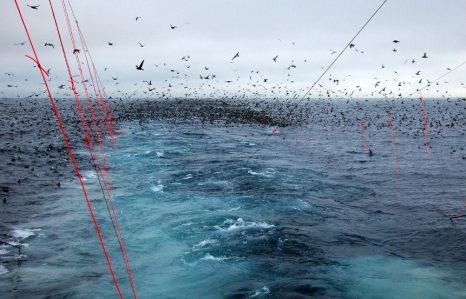
Collaborative project between researchers, fishermen aims to reduce West Coast seabird bycatch
A collaborative project between researchers and the West Coast sablefish fishing industry is showing promise for reducing the number of seabirds caught in longline fishing gear, in particular several albatross species including one threatened with extinction. The combination of using streamer lines (also called bird-scaring lines) to protect longline fishing gear from seabird attacks on baits, and setting hooks at night when the birds are less active can significantly reduce seabird mortality, the researchers say. click here to read the story 12:39
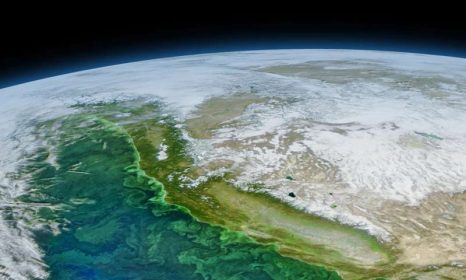
El Nino, Pacific Decadal Oscillation implicated in domoic acid shellfish toxicity
Using a combination of time-series data spanning two decades, the scientists not only showed a clear link between domoic acid and these larger climatic phenomena, but also developed a new model to predict with some accuracy the timing of domoic acid risks in the Pacific Northwest. The model is based on interpreting the status of the “Oceanic Niño Index” and the Pacific Decadal Oscillation – both of which are measures of climate, ocean water movement, currents and temperature. It’s designed to help coastal resource managers more effectively monitor this issue and protect public health. The findings were made by researchers from Oregon State University, the University of Oregon, the National Oceanic and Atmospheric Association (NOAA), and the Oregon Department of Fish and Wildlife. The work was primarily supported by NOAA. Read the article here 08:01
Scientists Are Closer To Understanding What Makes Ocean’s Toxic Algae Bloom
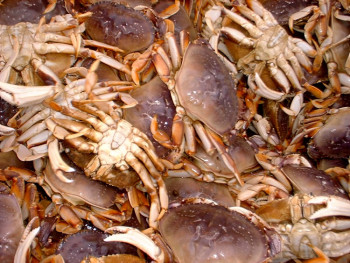 Last winter was the first time the Dungeness crab fishery in Oregon closed temporarily because of toxic algae in the ocean. And even just a week ago, another toxic bloom was happening off the coast. Scientists are just beginning to understand what triggers these conditions. A study this month from Oregon State University and the National Oceanic and Atmospheric Administration provides a rare peak below the waves. The toxin, demoic acid, is sometimes produced by an algae called Pseudo-nitzschia, or PN. PN does better than most algae when ocean temperatures are high and there isn’t much nutrients in the water. When these nutrient-poor conditions are followed by upwelling of rich, cold water from the ocean bottom, the PN are in the perfect position to party. Their numbers explode. Read the story here 08:46
Last winter was the first time the Dungeness crab fishery in Oregon closed temporarily because of toxic algae in the ocean. And even just a week ago, another toxic bloom was happening off the coast. Scientists are just beginning to understand what triggers these conditions. A study this month from Oregon State University and the National Oceanic and Atmospheric Administration provides a rare peak below the waves. The toxin, demoic acid, is sometimes produced by an algae called Pseudo-nitzschia, or PN. PN does better than most algae when ocean temperatures are high and there isn’t much nutrients in the water. When these nutrient-poor conditions are followed by upwelling of rich, cold water from the ocean bottom, the PN are in the perfect position to party. Their numbers explode. Read the story here 08:46
Oregon State University study finds salmon hatcheries produce genetically different fish
 New research from Oregon State University suggests hatchery-raised salmon, which are bred to help bolster wild stocks in B.C. and elsewhere, are genetically different from the populations they’re introduced into. Researcher Michael Blouin says scientists have known for some time the offspring of wild and hatchery-raised salmon are less adept at surviving in the wild, negatively affecting the health of wild populations. The question is, what is it about hatcheries that create fish believed to be inferior at surviving in the wild? Read the rest here 09:27
New research from Oregon State University suggests hatchery-raised salmon, which are bred to help bolster wild stocks in B.C. and elsewhere, are genetically different from the populations they’re introduced into. Researcher Michael Blouin says scientists have known for some time the offspring of wild and hatchery-raised salmon are less adept at surviving in the wild, negatively affecting the health of wild populations. The question is, what is it about hatcheries that create fish believed to be inferior at surviving in the wild? Read the rest here 09:27
New Study: Injuries among Dungeness crab fishermen examined
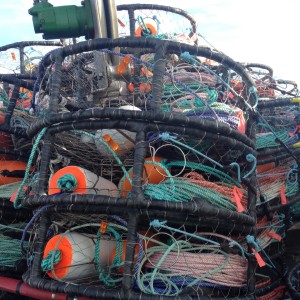 Commercial Dungeness crab fishing on the West Coast is one of the highest risk occupations in the United States, based on fatality rates. But non-fatal injuries in the fishery appear to go largely unreported, a new study from Oregon State University shows. While the fatality rates in the Dungeness crab fleet have been reported in the past, the incidence of non-fatal injuries have not been previously studied, said Laurel Kincl, an assistant professor of environmental and occupational health and safety in the . Read the article here 15:39
Commercial Dungeness crab fishing on the West Coast is one of the highest risk occupations in the United States, based on fatality rates. But non-fatal injuries in the fishery appear to go largely unreported, a new study from Oregon State University shows. While the fatality rates in the Dungeness crab fleet have been reported in the past, the incidence of non-fatal injuries have not been previously studied, said Laurel Kincl, an assistant professor of environmental and occupational health and safety in the . Read the article here 15:39
Study finds some West Coast fish can survive in low-oxygen ocean dead zones while others leave
 Scientists say they have found that some fish can survive in low-oxygen dead zones that are expanding in deep waters off the West Coast as the climate changes. The study focused on catches from 2008 through 2010 of four species of deepwater groundfish — Dover sole, petrale sole, spotted ratfish and greenstriped rockfish. Oregon State University oceanographer Jack Barth, a co-author, says commercial fishermen will likely start taking oxygen levels into account as they decide where to tow their nets. Read the rest here 08:17
Scientists say they have found that some fish can survive in low-oxygen dead zones that are expanding in deep waters off the West Coast as the climate changes. The study focused on catches from 2008 through 2010 of four species of deepwater groundfish — Dover sole, petrale sole, spotted ratfish and greenstriped rockfish. Oregon State University oceanographer Jack Barth, a co-author, says commercial fishermen will likely start taking oxygen levels into account as they decide where to tow their nets. Read the rest here 08:17
Big step for Oregon wave demo of hydrokinetic energy test project
 A 20MW wave-energy test project off Oregon has cleared another permitting hurdle. The US Bureau of Ocean Energy Management today said it is appropriate to issue a lease on a non-competitive basis for the site offshore Newport.,, 33-square mile area about four miles offshore, where water depths range from 180 to 230 feet. Read more here 09:46
A 20MW wave-energy test project off Oregon has cleared another permitting hurdle. The US Bureau of Ocean Energy Management today said it is appropriate to issue a lease on a non-competitive basis for the site offshore Newport.,, 33-square mile area about four miles offshore, where water depths range from 180 to 230 feet. Read more here 09:46
Researchers explore fishing-related injuries and prevention strategies
 Handling frozen fish caused nearly half of all injuries aboard commercial freezer-trawlers and about a quarter of the injuries on freezer-longliner vessels operating off the coast of Alaska, new research from Oregon State University shows. However, an analysis of 12 years of injury data showed that fishing on the freezer vessels was less risky than many other types of commercial fishing,,, Read more here 09:06
Handling frozen fish caused nearly half of all injuries aboard commercial freezer-trawlers and about a quarter of the injuries on freezer-longliner vessels operating off the coast of Alaska, new research from Oregon State University shows. However, an analysis of 12 years of injury data showed that fishing on the freezer vessels was less risky than many other types of commercial fishing,,, Read more here 09:06
Researchers test bycatch reduction device for groundfish trawling – tested a new “flexible sorting grid excluder”
statesmanjournal.com. – In a series of tests that included 30 tows off the Washington coast, commercial fishermen were able to reduce the number of halibut taken as bycatch by 57 percent, while retaining 84 percent of the targeted groundfishes, according to Mark Lomeli of the Pacific States Marine Fisheries Commission, a multistate agency charged with sustainably managing Pacific Ocean resources. continued
New Crab Study in Southeast Alaska – Fishermen’s News
Female red king crab from the Juneau area will be the subject of a study to optimize the diet of larval king crab by the Alutiiq Pride Shellfish Hatchery, University of Alaska Fairbanks, and Oregon State University.
http://fnonlinenews.blogspot.com/2012/10/new-crab-study-in-southeast-alaska.html






